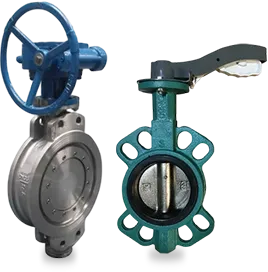Understanding the Functionality and Applications of Butterfly Valves in Modern Industries
Understanding Butterfly Valves Functionality and Applications
Butterfly valves are among the most efficient and commonly used types of valves in various industries, including water treatment, chemical processing, and oil and gas. Their unique design combines versatility and reliability, making them ideal for regulating or isolating flow in piping systems.
What is a Butterfly Valve?
A butterfly valve is a quarter-turn rotary valve that uses a circular disc or a plate to control the flow of fluid. The valve consists of three main components the body, the disc, and the actuator. When the actuator turns the disc 90 degrees, it either opens or closes the valve, permitting or blocking fluid flow. The disc is mounted on a shaft, which is positioned at the center of the valve body, allowing it to rotate easily.
One of the most prominent characteristics of butterfly valves is their simplicity and compact design. Unlike other valve types, butterfly valves require less space and are lighter, which makes them easier to install and maintain. They can be fabricated from a variety of materials, including metals, plastic, and rubber, which allows for customization based on the application and environmental conditions.
Types of Butterfly Valves
Butterfly valves can be classified into several types based on their design and operational mechanism
1. Double-Offset Butterfly Valve In this design, the shaft axis is offset from the centerline of the pipe to reduce wear on the sealing surfaces. This type is often used in high-pressure applications.
2. Triple-Offset Butterfly Valve This valve features three offsets and provides an even tighter seal compared to the double-offset design. It is suitable for high-performance applications, often used in the oil and gas industry.
3. Lugged Butterfly Valve This type has threaded lugs that facilitate installation between two flanges. They can be removed from the piping system without needing to drain the system, which adds convenience.
butterfly valve

4. Wafer Butterfly Valve Wafer valves are sandwiched between two flanges and are ideal for applications where space is limited. They are lightweight and easy to install.
5. Electric Butterfly Valve This variation is powered by electric actuators and is suitable for automated systems. They provide precise control and can be integrated into control systems for remote operation.
Applications of Butterfly Valves
Butterfly valves are utilized across a broad spectrum of applications due to their flexibility and effectiveness. Some notable areas of use include
- Water Treatment Plants Butterfly valves are crucial for flow control in systems that purify and distribute water. - Chemical Processing In industries dealing with corrosive substances, butterfly valves can be made from resistant materials to withstand harsh chemicals. - HVAC Systems These valves are used in heating, ventilation, and air conditioning systems to regulate airflow and maintain desired temperatures. - Food and Beverage Industry Sanitary butterfly valves are used in the food and beverage sector, as they can be easily cleaned and meet health standards. - Oil and Gas Butterfly valves play a significant role in pipelines where they control the flow of crude oil and natural gas.
Advantages of Butterfly Valves
The benefits of butterfly valves are numerous
- Cost-Effective Their simple design usually translates to lower manufacturing and installation costs. - Space Efficient They occupy less space compared to gate or globe valves, making them ideal for tight spaces. - Simplicity of Operation The quarter-turn operation of butterfly valves allows for ease of use and quick response time. - Versatile They can handle a wide range of fluids, from water to corrosive chemicals.
Conclusion
In conclusion, butterfly valves are invaluable components in modern industrial systems, characterized by their efficient operation, versatility, and adaptability. Their various types and applications underscore their importance across multiple sectors. As industries continue to evolve, butterfly valves will remain a reliable choice for ensuring smooth and effective flow control.
-
3 types of check valves maintenance tipsNewsAug.23,2025
-
Ball valves types with trunnion mounted designNewsAug.23,2025
-
Butterfly valve company production capabilitiesNewsAug.23,2025
-
Fisher globe valve technical specificationsNewsAug.23,2025
-
Types of gaskets for flanges selection guideNewsAug.23,2025
-
Wedge gate valve suppliers quality standardsNewsAug.23,2025
-
Breakthrough in Domestic Low Temperature Valve Technology in ChinaNewsAug.18,2025




